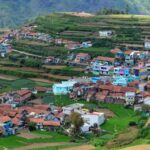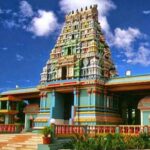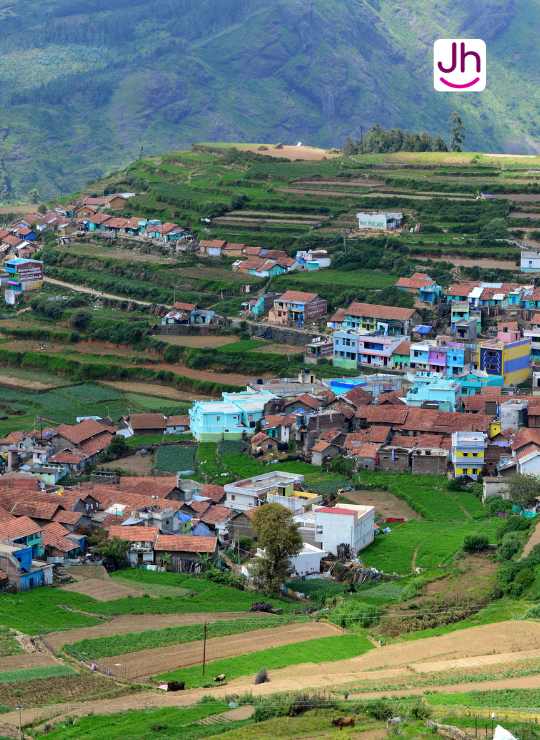Best Tourist Places to Visit in Dindigul
Best Tourist Places to Visit in Dindigul with your family or friends or for couples. Dindigul is an interior region of Tamil Nadu. Dindigul draws its name from the fort which looks like a pillow (Dhindu). Dindigul was famous even during the 7th century as Appar, the great poet bad visited the city and noted it in Thevararn. The very fact that Dindigul is ruled by Pandiyas, Cholas, Pallavas, Vijayanagara rulers and Mysore Maharaja is evident from the various temples, forts and other structures which bear the stamp of these dynasties.
Kodaikanal

Kodaikanal is a city in India whose name means ‘The Gift of the Forest’. lts a major tourist destination, Kodaikanal consists an area of 2,145 sq. meters situated at an altitude of 2,133 sq.mtrs. above the sea level. The highest place of Kodaikanal is Observatory (2,343 mus.). The Princess of Hill earns inimitable place in the global map of tourist places. Known for its serenity and ravishing locals with enormous tourist potentials, Kodaikanal can be approached by road from Madura, Dindigul and Palani. The drive via Ghat roads is an unique experience. Kodaikanal is known for it’s rich flora. Of the big trees is Cyprus, eucalyptus and acacia are the dominant varieties. Pear trees are numerous and the fruits are of high quality. Competing with the fruit trees are the flowering ones – mainly rhododendron and magnolia. Large dahlias of different hues are the main attraction of Bryant Park, which is situated close to the Lake.
Airports : Madurai 135 kms., Coimbatore 180 kms and Trichy200 kms.
Railway Junctions : Dindigul 100 kms., Kodai Road 80 kms. and Palani 65 kms.
Kurinji Andavar Temple

At a distance of 4 kms from Kodaikanal Bus Stand (on the edge of Kurinji Andavar Road), the Kurinji Andavar Temple is dedicated to Lord Mwuga, the God of Hills. In Tamil language Kurinji means ‘hill region’ and Andavar means ‘God’, hence Lord Muruga is referred as ‘God of hill’. The Kurinji Andavar Murugan temple is famous for its Kurinji flower which blossoms in the area only once in every I 2 years. The temple was built by Leelavathi Ramanatban. Born as a European, she was influenced by the religion of Hinduism and adopted the religion. She patronized the construction of the temple that was erected in the year 1936. Thousands of devotees visit this temple during the summer festival to seek the blessings of Lord Muruga. It gives beautiful views of Northern Plains and Palani Hills.
Moir Point
At a distance of 8 kms from Kodaikanal bus stand and 3 kms from Pillar Rocks, Moir Point is a historic place and a beautiful viewpoint in Kodaikanal on Berijam Lake Road. Moir Point offers breathtaking views of the highest peaks around Kodaikanal. The site is named after Sir Thomas Moir, an engineer who constructed the Goschen Road in 1929. This point joins the Berijam Lake Road with Kodaikanal here. There is a monument commemorating Thomas Moir at the viewpoint. The park near Moir Point was recently upgraded, making it more attractive. This is a major tourist spot and attracts a lot of crowds. It is adjacent to the main road towards Berijam Lake and is easily accessible.
Guna Cave
At a distance of 8.5 kms from Kodaikanal Bus Stand and 1.5 kms from Pillar Rocks, Guna Caves is a wonderful tourist spot in Kodaikanal on Moir Point Road. The caves are formed between two large Pillar Rocks. It is one of the best tourist places to visit in Kodaikanal. These large, dark, and ancient caves are also called Devil’s Kitchen. Situated amidst a thick forest on a hilltop behind Pillar Rocks, Guna Caves is one of the top-visited places in Kodaikanal. The path to Guna Caves passes through a beautiful pine forest with roots of the trees emerging onto the ground, providing a unique setting to this place. Apart from the historical importance, the beauty of nature makes it a popular tourist spot in Kodaikanal. Visitors can view the caves from a distance as the surroundings of the caves are closed for security reasons. From the hilltop, visitors can get a glimpse of beautiful valleys and Pillar Rocks on a clear day. This gorge is filled with thick clouds in the monsoon and winter seasons. This is a great location for photography. Visitors need to walk for about 400 meters (10 minutes) from the main entrance to reach the caves and hilltop.
Bryant Park
Just east of the lake and 500 meters from the bus stand is a wonderfully maintained 20.5-acre BOTANICAL GARDEN. The park was planned and built in 1908 by a Forest Officer from Madurai, F.L.O. Bryant, and named after him. With various species of trees and shrubs, the park is a rainbow of stunning flowers during the peak season. A large section is dedicated to nearly 740 varieties of roses. There is a Bodhi tree that adds religious significance to the park. Ornamental plants are cultivated in a nursery for sale. The park organizes horticultural exhibits and flower shows every summer to coincide with the peak season. The entrance fee to the park is nominal, and it is open throughout the year.
Coaker’s Walks
At a distance of 0.5 km from Kodaikanal bus stand, Coaker’s Walk is the most scenic and beautiful tourist spot in Kodaikanal, close to Kodaikanal Lake. It is also one of the prime tourist places. Discovered by Lt. Coaker in 1872, Coaker’s Walk is a one-kilometer paved pedestrian path running parallel to Club Road along the edge of steep slopes on the southern side of Kodai. The walk, winding around Mount Nebo, starts in front of the Van Allen Hospital, runs parallel to the Van Allen Hospital Road, and joins the main road beside St. Peter’s Church, providing a stunning panoramic view of the valleys and plains. On a clear day, one can view as far as Dolphin’s Nose in the south, the valley of the Pambar River in the southeast, Periyakulam town, and even the city of Madurai. Evenings are the best time to experience the beauty of this place when the mystic clouds slowly cover the mountains, and the hills appear like they are covered by a white carpet. The walkway is very well maintained, and it is a great spot for photography. One side of the walkway is occupied by majestic houses built during the colonial period.
Poombarai Village
Poombarai is a picturesque hamlet near Kodaikanal that is famous for its views and ancient temples. You can walk around the little village that is step-structured upon grasslands and check out its splendid viewpoints. Those who have been to Marmavanur or Kookal village might have seen Poombarai village from a distance. It is in the valley and visible from the main road with an astonishing view. It is located 19 kms from Kodaikanal. It is famous for the Kuzhanthai Velappar Temple (Lord Muruga). The idol is made of Navapashanam. It is said to date back 3000 years or more. The village is in the valley with terrace farmlands all around it and on the surrounding small hills as well. It offers a great photographic point.

